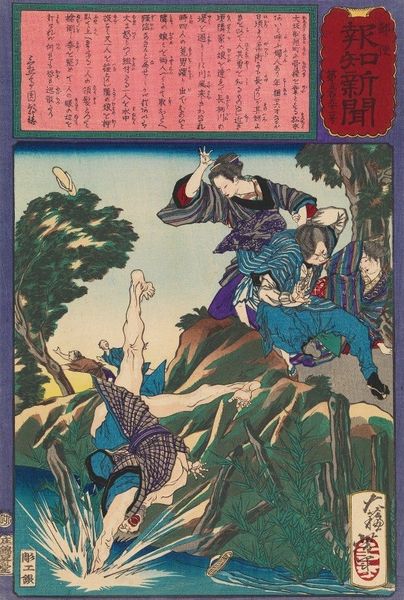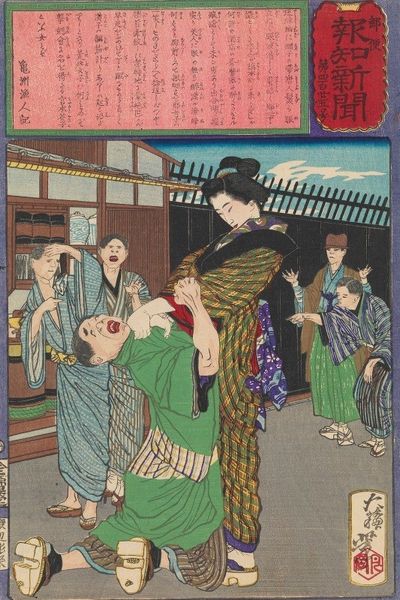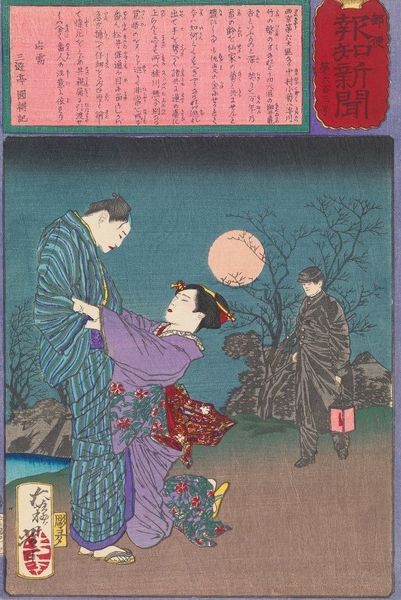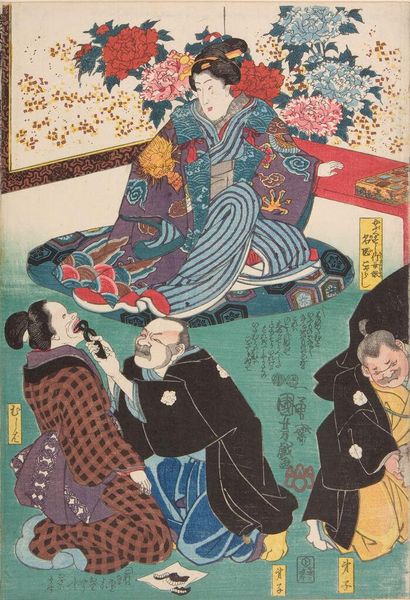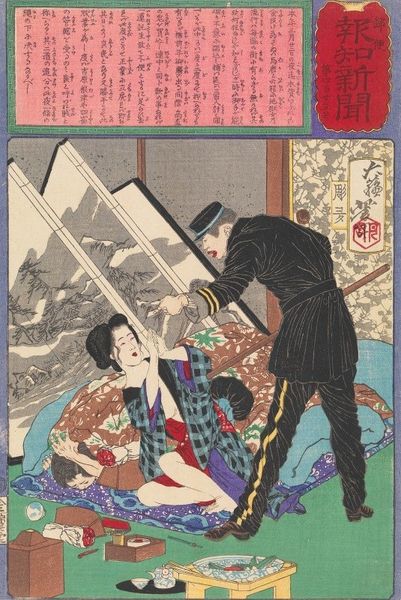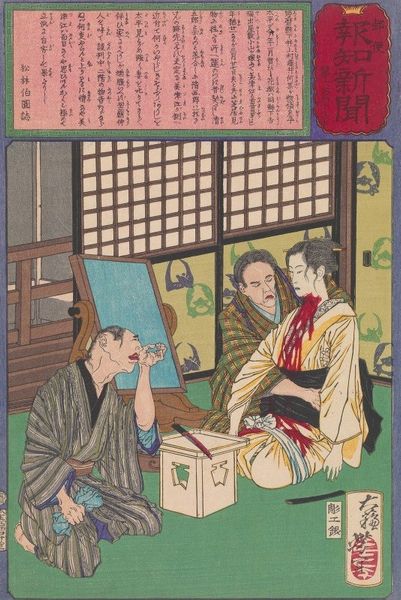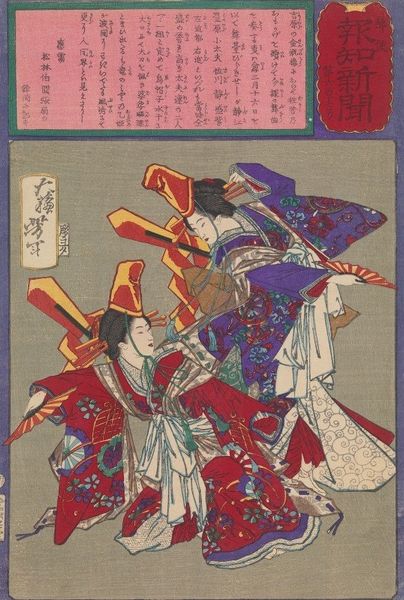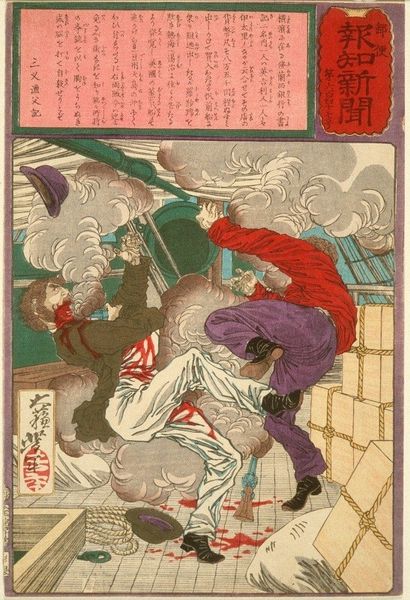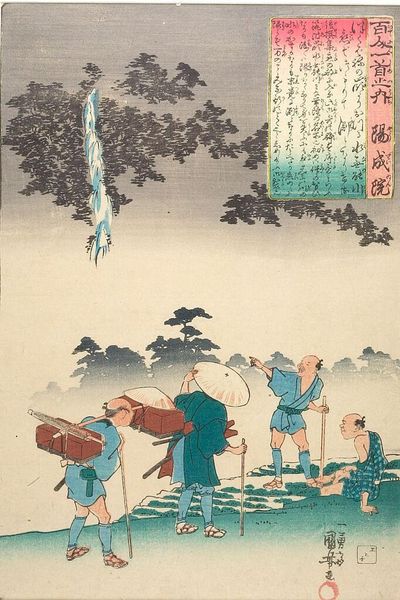
Copyright: Public Domain: Artvee
Curator: Editor: Okay, we’re looking at "An Indecorous Courtship," a woodblock print made in 1875 by Tsukioka Yoshitoshi. It’s giving me a kind of comical vibe, with these rather ungainly figures and odd framing... How do you interpret this work, considering its medium? Curator: We can begin with its materiality. This isn't just ink on paper; it’s a woodblock print, mass-produced for wide consumption. Given this context, it disrupts high/low art boundaries. What does the image's narrative—the "indecorous courtship"—tell us about the consumers who might have purchased it? Editor: I see what you mean about blurring the lines. The clothing really stands out to me. Are there clues there? Curator: Absolutely! Consider the labour involved in textile production and its display here. Their garments aren't simply decorative. Notice the figures holding the fabric with the crest. What does it communicate about class, consumption, and even the potential for satire regarding social mobility? Editor: It does seem like a mockery of the upper class! The expressions and poses are so exaggerated. It seems more about making fun of them rather than actually representing the refined courting traditions they’re trying to partake in. Curator: Exactly! And consider the newspaper headline depicted at the top of the print. What's the connection between mass media, printed images, and the social critique being presented here? Is this print an independent creation, or part of the modern world in which information becomes a commodity, reshaping norms and influencing individual interactions? Editor: This has shifted my view quite a bit; I see how much the printmaking process adds to its meaning. Thank you. Curator: It’s a pleasure to highlight those dynamics. Material conditions, even for art objects, are an important factor for art history.
Comments
No comments
Be the first to comment and join the conversation on the ultimate creative platform.

